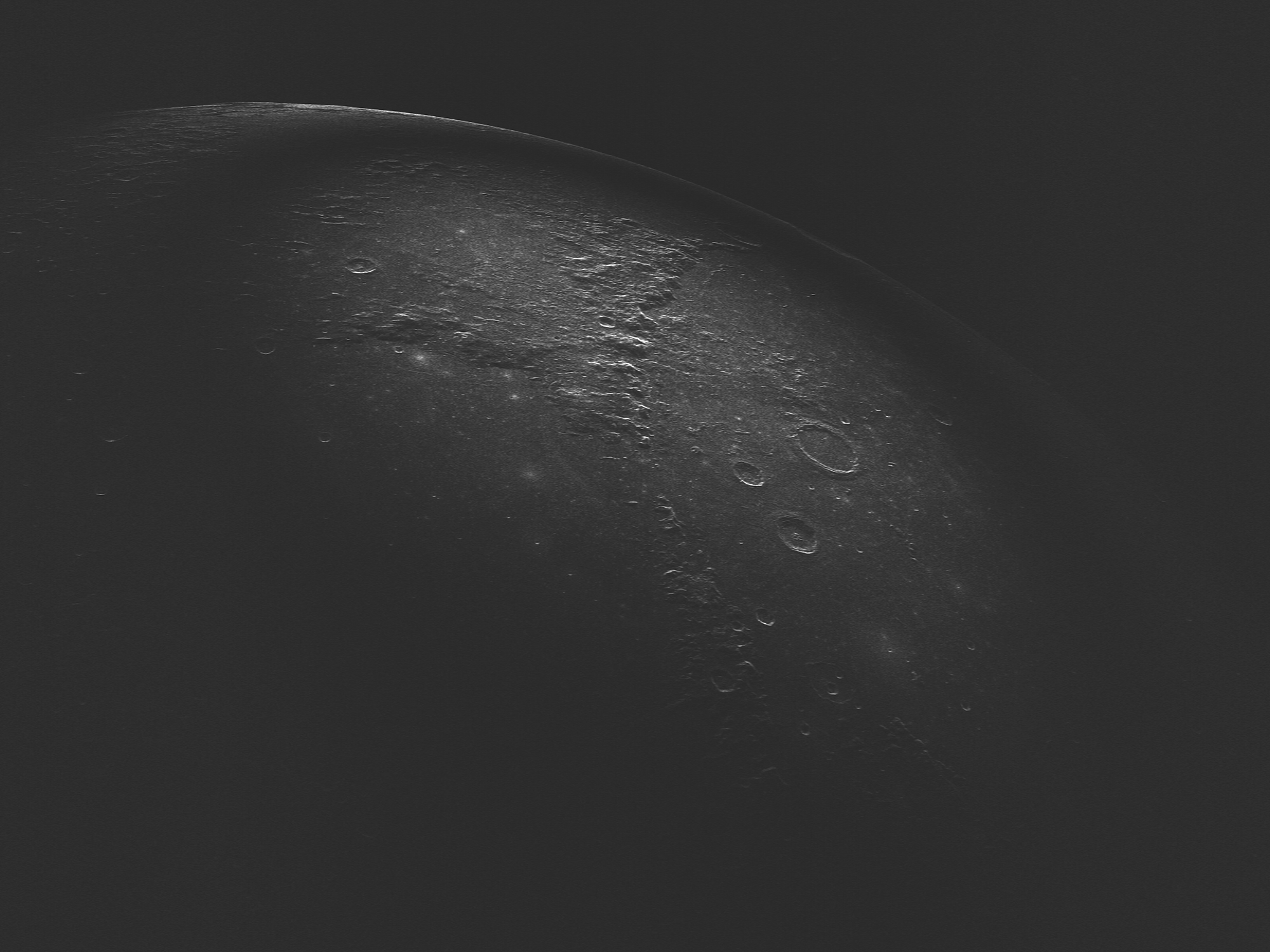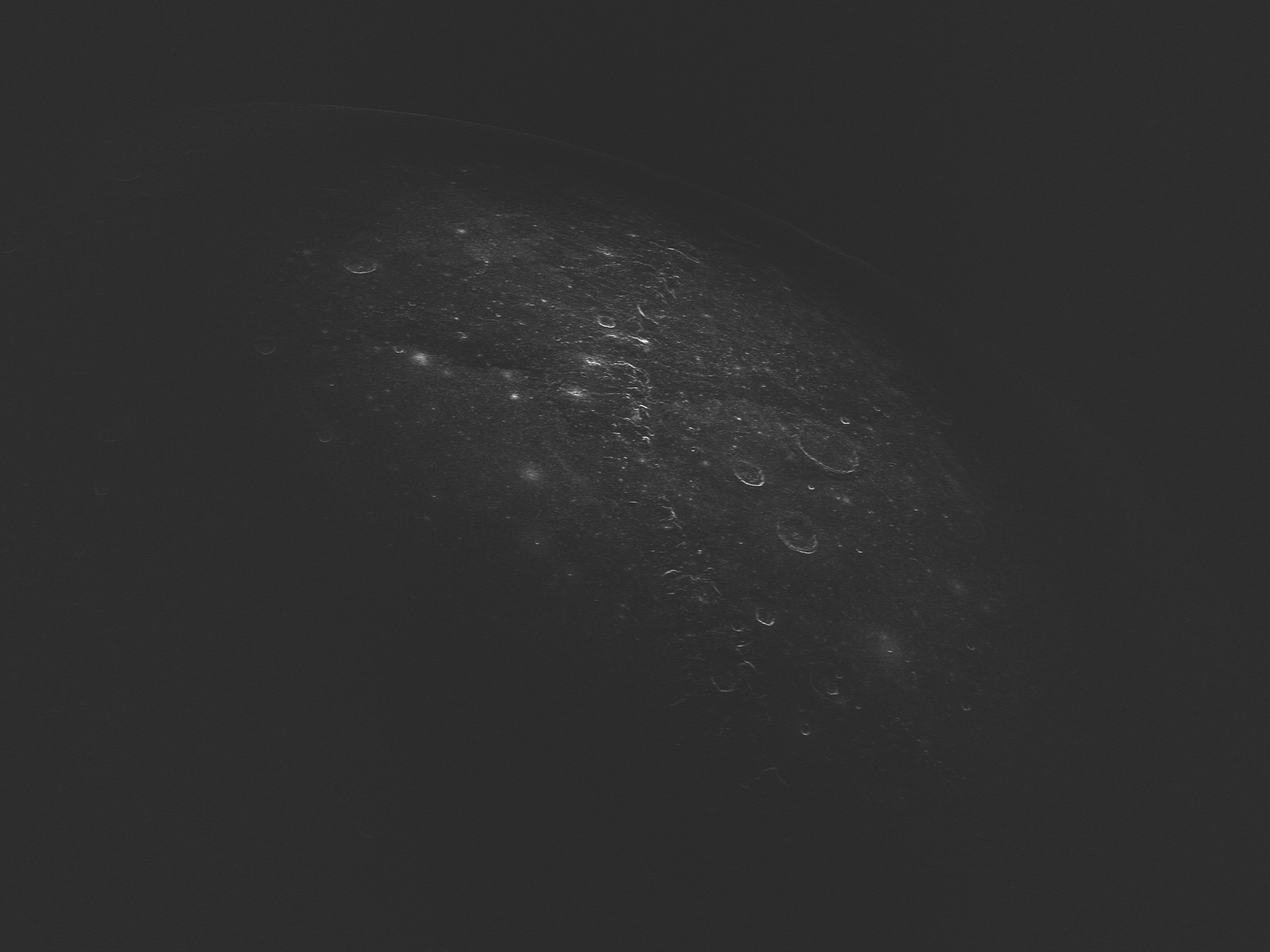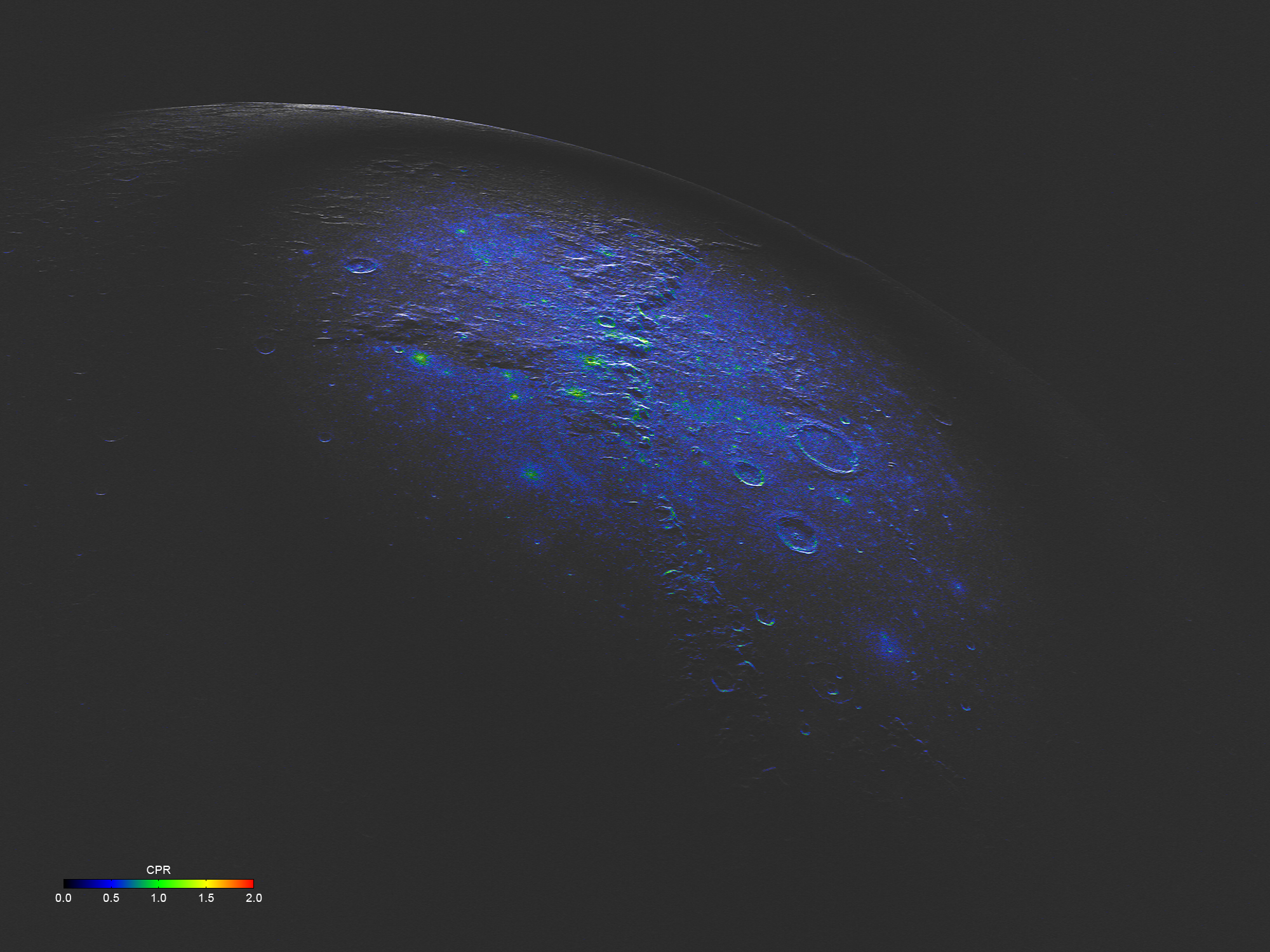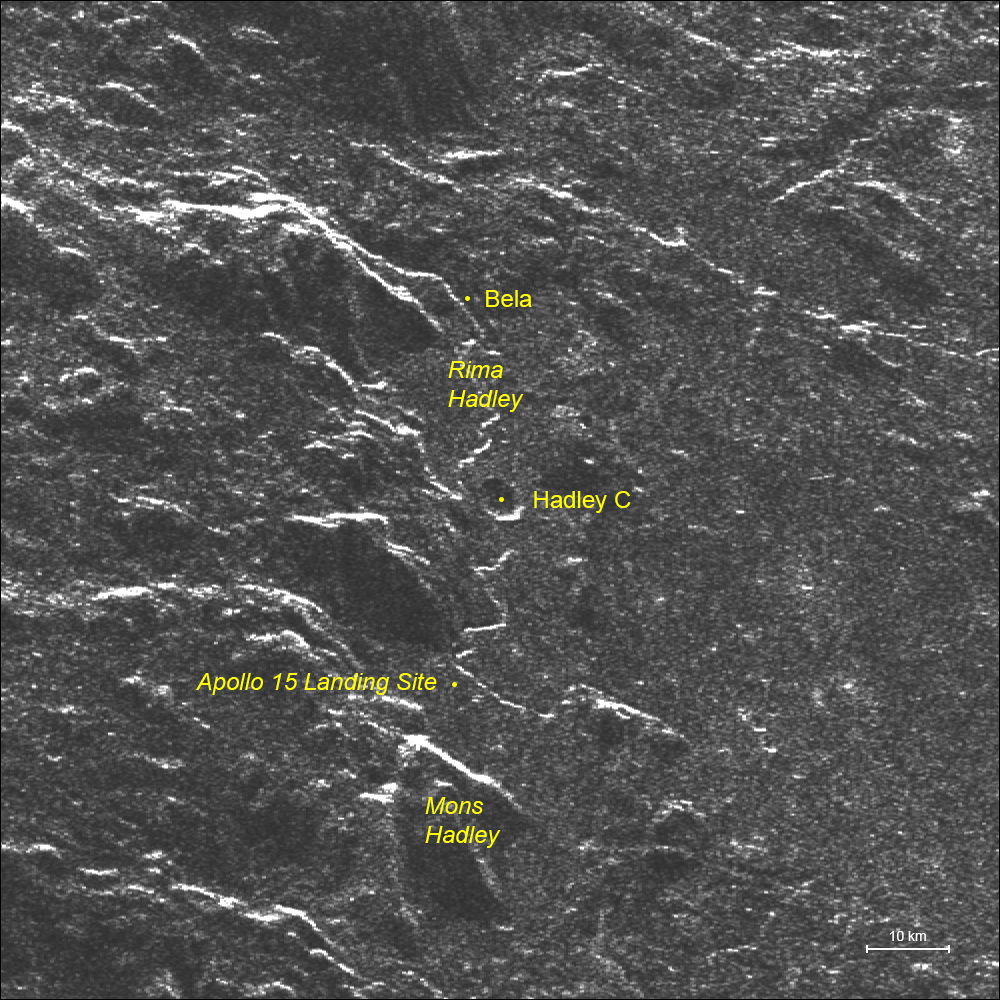Rima Hadley (Hadley Rille)
Sinuous rille located west of the Apollo 15 landing site, begins at Bela crater and runs on to the North along the Apennine Mountain Range.
Characteristics
| Selenographic Coordinates | 25.72° N, 3.15° E |
| Diameter | 116.09 km |
| Length | ~80 km |
| Depth | 180-270 m |
| Average Width | ~1.2 km |
Observation Schedule
| Date | Window, UT | Receiver |
Transmitter |
Frequency, MHz |
λ, cm |
Ptx, kW |
R, au |
RTT, sec |
SNR/RTT |
|---|---|---|---|---|---|---|---|---|---|
| 2021 Sep 7 | 13:40 - 13:50 | RT-13 (Sw) | DSA-3 [1] | 7190.0 | 4.2 | 2.0 | 0.00248 | 2.47 | ~1230000 |
Range-Doppler radar images
4.2-cm bistatic DSA-3/RT-13 range-Doppler radar images of Rima Hadley region obtained at Svetloe observatory on September 7, 2021. At this wavelength, radar signals penetrate up to one meter deep into the lunar regolith and are sensitive to surface and suspended rocks with a diameter of about 1 cm and larger. Range (distance from the observer) increases down and Doppler frequency increases to the right.
Opposite-sense circular polarization radar image of Rima Hadley region at 4.2-cm wavelength. (Download in high res.)
Same-sense circular polarization radar image of Rima Hadley region at 4.2-cm wavelength. (Download in high res.)
Radar image overlaid with the color tones of the circular polarization ratio (CPR) indicates the degree of surface roughness, rock abundance and material composition at the lunar surface and below. (Download in high res.)
The Rima Hadley region and the Apollo 15 landing site on a radar image with a spatial resolution of about 120 m.
Remarks
We thank the National Commission on Space Activities of Argentina (CONAE) and the technical staff at Malargüe station for the help with the radar observations.



